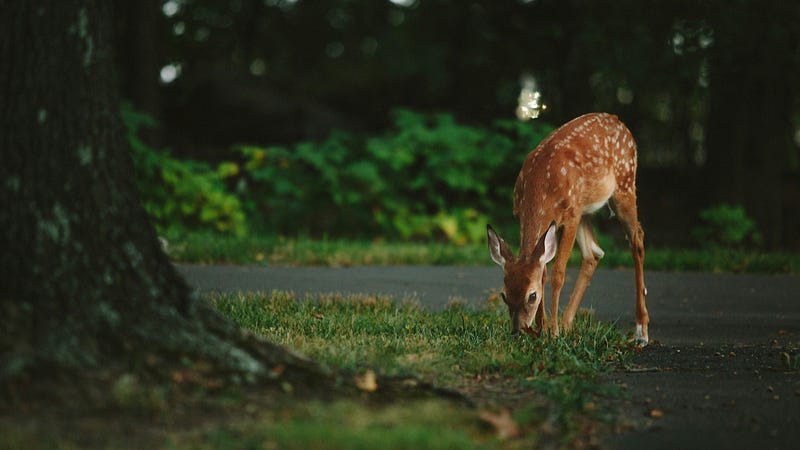A Dismal Outlook for the Key Deer Population in Florida
Written on
Chapter 1: The Unique Key Deer
In the Florida Keys, a small species of deer, comparable in size to golden retrievers, roams the islands. Some are found lurking in mangroves, occasionally pausing to investigate strange sounds, while others wander into backyards, nibbling on gardens while homeowners are distracted. These distinctive residents are known as Key Deer, a diminutive subspecies of white-tailed deer and a beloved symbol of southern Florida.
Found exclusively in the Florida Keys, the majority of their population resides on Big Pine Key. Locals treasure these deer, and conservation efforts have successfully protected them over the years. Despite their idyllic surroundings, the Key Deer remain unaware of the troubling fate that looms ahead.
Key Deer were once heralded as a conservation triumph. From a mere 50 individuals in the 1950s, their numbers have surged to nearly 1,000 today. This recovery was significantly aided by their protection under the Endangered Species Act in the 1970s, alongside other species such as Florida Manatees and Bald Eagles. Through this legislation, along with the dedication of wildlife biologists and game wardens, the Key Deer overcame threats like habitat destruction, poaching, and vehicle collisions. Now, their populations are robust enough that local residents must protect their gardens and bird feeders from these small foragers.
However, the issue is no longer about population numbers. The true crisis lies in their habitat.
Big Pine Key is alarmingly low, at just 8 feet above sea level, making it susceptible to the rising seas caused by climate change. The deer have nowhere to flee as their island slowly vanishes, akin to a sinking ship. Saltwater is invading the island's periphery, contaminating freshwater sources essential for the vegetation that sustains the Key Deer. The influx of brackish water is detrimental to trees and shrubs, leaving behind only the skeletal remnants of once-thriving island forests.
In addition, hurricanes pose an imminent threat, worsened by climate change. Hurricane Irma devastated the Key Deer habitat in 2017, decimating approximately 30% of their population. It’s feared that a sufficiently powerful storm could eradicate the entire species overnight.
While the Key Deer have triumphed over past challenges, they now face new and daunting threats, with biologists left with few viable solutions that inspire confidence.
One potential solution is relocating the deer to higher islands. However, this risks them becoming an invasive species, causing harm to their new ecosystems.
Another approach involves moving them to the mainland. Yet, this could lead to interbreeding with standard white-tailed deer, diminishing the unique traits that define them.
A further option is to transfer them to zoos and sanctuaries, a move that would still render them extinct in their natural habitat—an unsatisfactory outcome.
Lastly, there’s the choice to take no action and allow the species to fade away on their sinking islands.
None of these alternatives bode well for the Key Deer, and no wildlife biologist desires to face this dilemma.
For the time being, efforts are being made to safeguard this remarkable species while hoping that climate change can be mitigated enough to ensure their survival. The longevity of Big Pine Key above water remains uncertain—it could last for a few decades or perhaps a century or two. Regardless, if significant changes aren't implemented, the Key Deer will serve as another somber testament to the harsh realities of climate change.
Section 1.1: Climate Change and Its Impact

In this section, we delve into the specifics of how climate change is affecting the Key Deer and their ecosystem.
The first video discusses how climate change threatens the habitats of Key Deer and other native species, shedding light on the environmental challenges they face.
Section 1.2: Conservation Strategies and Challenges
As we explore potential strategies for the conservation of Key Deer, it's essential to consider the complexities involved in each approach.
The second video highlights the National Key Deer Refuge, showcasing the efforts being made to protect these unique animals and their habitat.